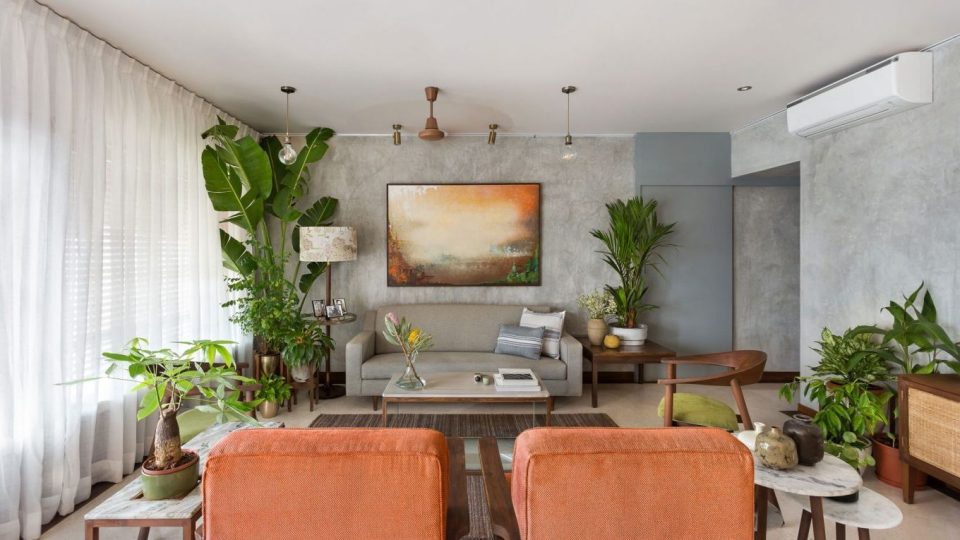Home improvement projects offer a fantastic opportunity to breathe new life into your living space. Whether you’re hoping to enhance the functionality, aesthetics, or value of your home, integrating design principles with DIY (Do It Yourself) projects can transform your space without breaking the bank. While professional contractors and designers have their place, there’s something uniquely satisfying and often more affordable about taking matters into your own hands. But how exactly do you balance creativity and functionality? How do you make sure your DIY efforts aren’t just cost-effective but also stylish? Here’s how you can improve your home with thoughtful design paired with DIY ingenuity.
1. Start with a Clear Design Plan
One of the most important elements in any home improvement project—especially DIY—is having a clear design plan. It’s tempting to dive into a project with excitement, but without a well-thought-out plan, you might find yourself overwhelmed or unsure of where to start. Begin by identifying the area of your home you want to improve. Whether it’s a bedroom makeover, an entryway refresh, or a full-scale kitchen renovation, pinpointing your objective is the first step.
From there, consider the existing design elements in your home. What are the colors, textures, and materials that already define the space? What do you want to keep, and what needs to change? A great home design isn’t just about adding new things; it’s about making sure everything flows together. Make use of design tools such as mood boards, either physical or digital, to visualize the look and feel of the final outcome. Pinterest, for instance, is a goldmine for inspiration, while apps like SketchUp or Canva can help you create layouts or mock-ups.
Once you have a vision, break it down into manageable tasks. DIY doesn’t have to mean tackling everything at once. Smaller, incremental changes can lead to a more cohesive and impactful result. With the plan in hand, you can confidently approach each task with purpose.
2. Use Paint to Transform Your Space
One of the simplest and most cost-effective ways to transform a room is with paint. It’s incredible how a fresh coat of paint can update a space, refresh the ambiance, and even make it feel larger or more intimate depending on the color choice. When considering your DIY design project, paint should be one of the first things to consider.
For smaller spaces like bathrooms or bedrooms, light, airy colors such as whites, soft grays, or pastels can make the room feel expansive and serene. On the other hand, deep hues like navy, charcoal, or emerald green add drama and sophistication to a living room or dining room. The key here is to choose a palette that complements both the purpose of the room and the existing décor. You don’t need to repaint your entire home to make a statement—accent walls or feature ceilings can be equally striking and more manageable for a DIY approach.
Don’t be afraid to experiment with different techniques like ombre, geometric patterns, or even wall stenciling to add texture and visual interest to the space. While DIY painting projects might require a bit of elbow grease and patience, the rewards are immediate and impactful.
3. Repurpose and Upcycle Furniture
Furniture is often one of the biggest expenses when renovating a room, but with a little creativity, you can give your existing furniture a new lease on life. Repurposing and upcycling are not only budget-friendly options, but they also allow you to personalize your space. Whether it’s a vintage dresser that needs a fresh coat of paint or a set of chairs in need of new upholstery, these DIY projects can add unique character to your home.
Start with simple changes. Sand down and repaint wooden furniture for a more modern or rustic look, or replace outdated knobs and handles with more contemporary designs. Upholstering a piece of furniture yourself may seem daunting, but it’s a task that’s surprisingly achievable with a bit of practice and guidance. Websites like YouTube have countless tutorials, and many fabric stores even offer classes for beginners.
For those feeling a little more adventurous, consider reworking old furniture into new forms. An old ladder can be turned into a bookshelf, while unused crates can be transformed into side tables. The possibilities are endless, and your creativity can truly shine. Not only does repurposing furniture give your home a fresh look, but it also tells a story, as each item has been thoughtfully transformed.
4. Incorporate Textures to Add Depth
Texture is a key design element that can elevate a DIY project, making your home feel more inviting and dynamic. Adding texture through textiles and materials is a simple way to inject personality into any room. Start by focusing on softer elements like rugs, pillows, throws, and curtains. A beautifully patterned rug can anchor a room, while plush throw pillows and blankets can add a sense of coziness and warmth.
Consider experimenting with DIY fabric projects, such as sewing your own curtains or creating custom pillow covers to suit your space. If sewing isn’t your thing, try no-sew projects like fabric-wrapped frames or simple tie-up curtain treatments that don’t require stitching. Textures like velvet, linen, and faux fur can dramatically change the mood of a space—adding elegance, comfort, or even a touch of playfulness.
In addition to fabrics, the use of other materials like wood, metal, and stone can add tactile interest. If you’re working with a minimalist design, focus on one or two key textural elements—such as a reclaimed wood coffee table paired with linen cushions. For a more eclectic look, mix a variety of textures, including woven baskets, macramé wall hangings, and polished metal accents.
5. Update Lighting Fixtures
Lighting plays an essential role in setting the tone of a room. Yet, too often, lighting is left as an afterthought during home improvement projects. A well-designed lighting scheme can make all the difference. Fortunately, updating lighting fixtures is a DIY project that doesn’t require advanced skills and can have a profound impact on the look and feel of a space.
Consider replacing outdated light fixtures with contemporary ones that complement your room’s style. For instance, pendant lights can add a sleek, modern touch to a kitchen or dining area, while vintage-inspired sconces or chandeliers can add charm and character to a living room. Swap out harsh, fluorescent lights for softer, ambient lighting that enhances the room’s mood. Dimmer switches are another simple but effective upgrade that allows you to control the brightness, creating the perfect atmosphere for any occasion.
If you’re feeling particularly creative, you can craft your own light fixtures from materials like mason jars, pipes, or even driftwood. DIY light fixtures give you the freedom to customize your design and make a bold, personal statement in your home.
6. Create DIY Art and Decor
Personalizing your home doesn’t have to mean expensive artwork or designer décor. In fact, creating your own artwork and décor is a gratifying and budget-friendly way to improve your space. Whether it’s a hand-painted canvas, a photo gallery wall, or a DIY plant stand, the possibilities are endless.
Start with something as simple as a framed family photograph, or use scrap wood and paint to craft unique wall art. If you’re a fan of plants, a vertical garden or a handmade terrarium can introduce fresh greenery into your home and provide a sense of tranquility. DIY décor items like decorative trays, vases, and candle holders allow you to bring your own personality into a space while also offering function.
7. Organize and Declutter
A clutter-free home always feels more spacious and inviting. One of the simplest, yet most transformative DIY projects is organizing and decluttering. Invest some time in creating smart storage solutions that both streamline and beautify your space. Use baskets, bins, and shelves to create order without compromising on style.
Consider building custom shelving units for books, shoes, or other items, or repurpose old containers for storage solutions. Wall-mounted organizers are another great option, especially for smaller spaces. As you declutter and organize, you’ll begin to appreciate how much more serene your home feels.
Conclusion
Improving your home with design and DIY is not only rewarding but also an excellent way to personalize your living space. From painting walls and repurposing furniture to incorporating textures and upgrading lighting, the opportunities for transformation are endless. The key is to plan thoughtfully, use your creativity, and embrace the sense of satisfaction that comes with completing a project on your own. With the right mix of design principles and DIY techniques, you can create a home that’s functional, beautiful, and uniquely yours. So, roll up your sleeves, get inspired, and start making your home improvement dreams a reality.

